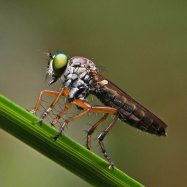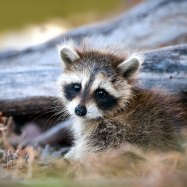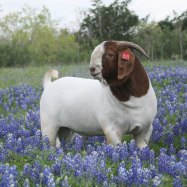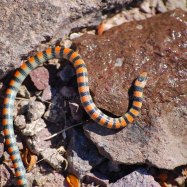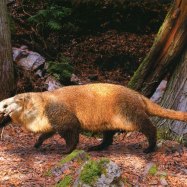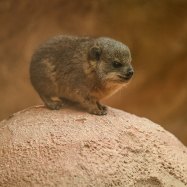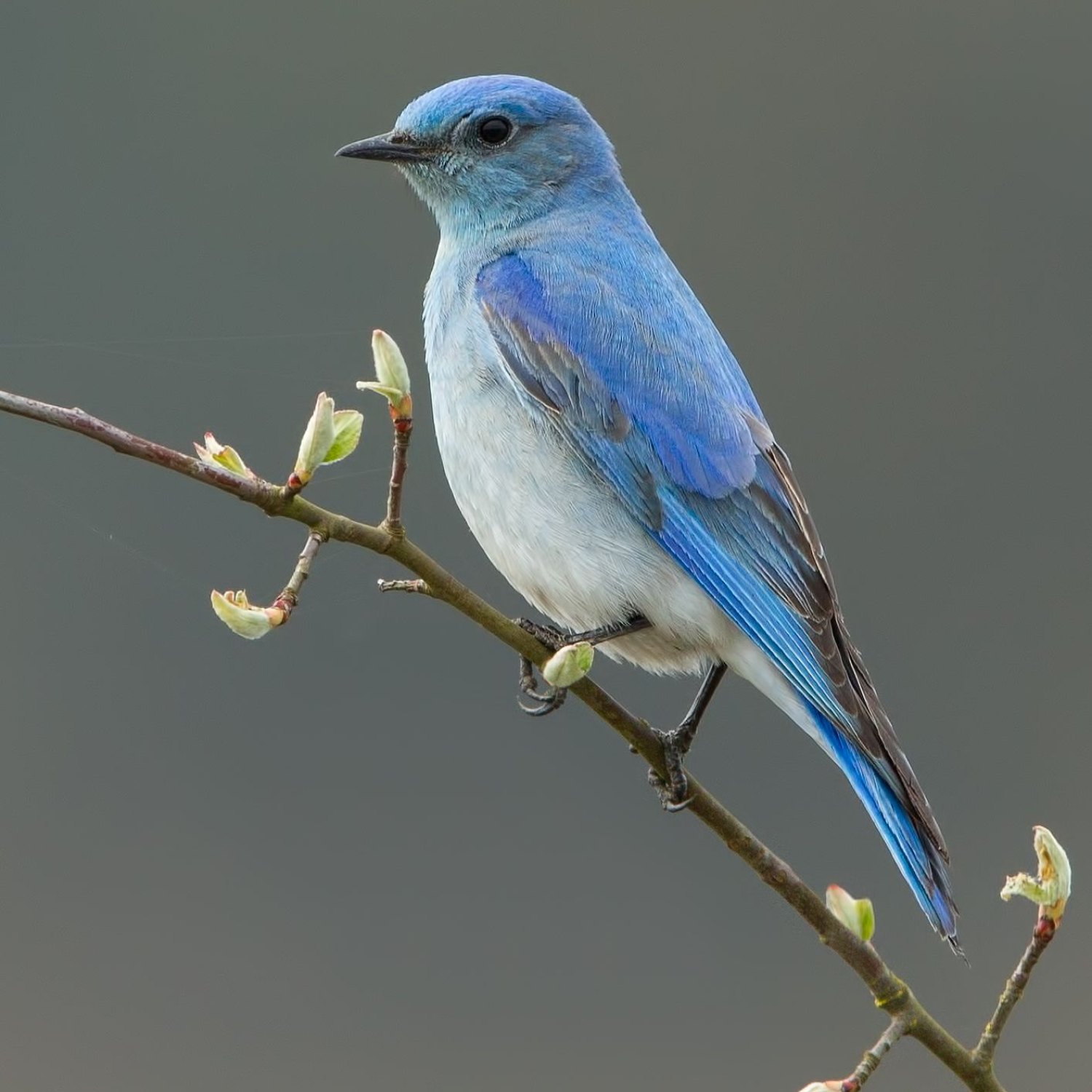
Mountain Bluebird
16-18 cm
The Mountain Bluebird, a slender and medium-sized bird, can be found in the Rocky Mountains region of the southwestern United States and southwestern Canada. Belonging to the Turdidae family, it measures 16-18 cm in length. With its striking blue plumage, this beautiful bird is a common sight in the mountains and is a favorite among birdwatchers. #MountainBluebird #RockyMountains #SouthwestUSA #SouthwestCanada
Animal Details Summary:
Common Name: Mountain Bluebird
Kingdom: Animalia
Habitat: Open woodlands, sagebrush, and mountain meadows
Mountain Bluebird: A Symbol of Beauty and Resilience
When one thinks of the mountains, images of rolling hills, rocky peaks, and breathtaking vistas often come to mind. However, hidden within these majestic landscapes, there lies a small yet remarkable bird that often goes unnoticed – the Mountain Bluebird (Sialia currucoides). Despite its diminutive size, this bird is a symbol of beauty, resilience, and adaptability, thriving in the harsh and unpredictable environments of the western United States, Canada, and Mexico. From its stunning physical features to its unique behavioral patterns, the Mountain Bluebird has captured the hearts of many and continues to fascinate researchers and bird enthusiasts alike Mountain Bluebird.A Feathered Gem
The Mountain Bluebird, also known as the Western Bluebird, is a member of the Turdidae family, which also includes other thrushes such as the American Robin and the Eastern Bluebird. It can be found in open woodlands, sagebrush, and mountain meadows, making its home in the Rocky Mountains, southwestern United States, and southwestern Canada. This bird's scientific name, Sialia currucoides, is derived from the Latin words "sialis," meaning a bird with a blue coloration, and "currucoides," referring to the bird's resemblance to a small and slender thrush.The Mountain Bluebird's physical appearance is undoubtedly one of its most striking features. Its body is mainly bright blue on the upperparts and throat, with a white belly and chest, making it a standout among its surroundings. The blue coloration is the result of light reflecting off the structure of its feathers, rather than pigmentation, giving it an iridescent quality. This feature is especially evident during breeding season when a male Mountain Bluebird's plumage is even brighter to attract a mate. In contrast, the female has a duller blue color with a slight gray tint. These subtle differences in coloration between genders, known as sexual dimorphism, are common among many bird species and are mainly due to their different roles in reproduction and caring for offspring Markhor.
A Formidable Hunter
The Mountain Bluebird's diet is primarily insectivorous, meaning it feeds on insects such as grasshoppers, beetles, and caterpillars. These birds are talented hunters, using their keen eyesight to spot prey while perched on a high vantage point or in flight. With their slender and medium-sized bodies, they are incredibly agile and can easily catch flying insects mid-air. They also forage on the ground for insects and berries, using their sharp beaks to dig into the soil and flip over leaves to find hidden prey.Interestingly, Mountain Bluebirds have been observed exhibiting a unique behavior known as "hover-hawking." This involves hovering in mid-air over grassy areas and hovering in one spot for a few seconds before quickly darting down to catch its prey. This technique allows the bird to capture insects that may be hidden in dense vegetation, making it a highly efficient hunting method.
Adaptability at Its Finest
One of the most impressive traits of the Mountain Bluebird is its adaptability to a wide range of habitats. It can be found in various types of environments, from high-altitude mountain ranges to low-lying valleys, showcasing its remarkable ability to thrive in different conditions. This adaptability is critical in the unpredictable mountain climates, where harsh weather conditions can drastically change from one day to the next. The Mountain Bluebird is equipped to withstand these challenges, equipped with a thick downy layer of feathers to keep it warm and a waterproof coating to protect it from rain and snow.This resilience is also evident in the Mountain Bluebird's nesting habits. Like many other birds, this blue gem builds a nest made of grasses, twigs, and feathers. However, it is unique in that it does not select a particular type of tree or location to build its nest. Instead, it will nest in any suitable location it can find, such as a birdhouse, a hollow tree, or even a fence post. This flexibility allows the bird to adapt to sudden changes in their environment, ensuring that they can continue to raise their young even in the most challenging of conditions.
Conservation Efforts
Despite its adaptability and resilience, the Mountain Bluebird population has faced several threats in recent years. Loss of habitat due to land development, widespread pesticide use, and competition from invasive bird species have all had a negative impact on this bird's population. However, dedicated conservation efforts have helped stabilize their numbers and ensure their ongoing survival. Organizations such as the Audubon Society and the North American Bluebird Society have focused on preserving and protecting the Mountain Bluebird's natural habitats, promoting the use of bird-friendly farming practices, and educating the public about this bird's importance.Moreover, individuals and communities have also taken an active role in safeguarding the Mountain Bluebird population. By installing nesting boxes and providing a safe and welcoming environment, these efforts have contributed to the bird's successful breeding and migration each year.
Inspiring Wonder and Awe
The Mountain Bluebird's beauty and resilience have captivated the hearts of many, making it a sought-after sight for bird watchers and nature enthusiasts. Its bright blue coloration, unique hunting techniques, and remarkable adaptability speak to its exceptional nature and make it a prized addition to any bird watcher's checklist.Furthermore, the Mountain Bluebird has become a symbol of hope and perseverance, reminding us of the importance of being resilient in the face of challenges. Despite the threats it has faced, this bird continues to thrive in the ever-changing landscapes of the western United States, Canada, and Mexico, inspiring us to do the same in our own lives.
In conclusion, the Mountain Bluebird is not just an eye-catching bird found in the mountains; it is a symbol of beauty, adaptability, and resilience. Its unique physical features, remarkable hunting skills, and ability to thrive in different environments make it a fascinating subject for researchers and a source of wonder and awe for all those who get the chance to observe it. With ongoing conservation efforts and a growing awareness of its importance, we can ensure that this blue gem will continue to grace our mountains for generations to come.

Mountain Bluebird
Animal Details Mountain Bluebird - Scientific Name: Sialia currucoides
- Category: Animals M
- Scientific Name: Sialia currucoides
- Common Name: Mountain Bluebird
- Kingdom: Animalia
- Phylum: Chordata
- Class: Aves
- Order: Passeriformes
- Family: Turdidae
- Habitat: Open woodlands, sagebrush, and mountain meadows
- Feeding Method: Insectivorous
- Geographical Distribution: Western North America
- Country of Origin: United States, Canada, and Mexico
- Location: Rocky Mountains, southwestern United States, and southwestern Canada
- Animal Coloration: Mainly bright blue on the upperparts and throat, with a white belly and chest
- Body Shape: Slender and medium-sized
- Length: 16-18 cm
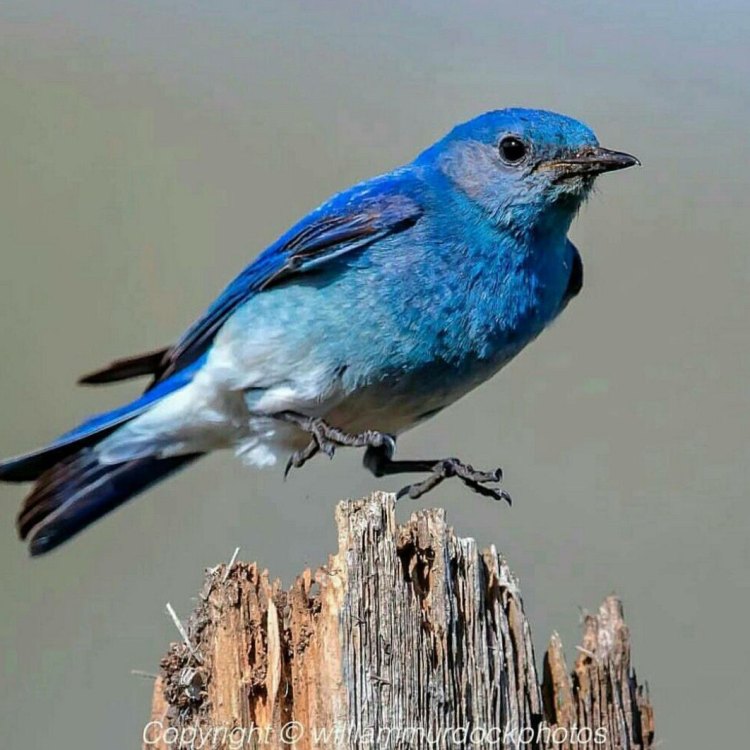
Mountain Bluebird
- Adult Size: Medium-sized bird
- Average Lifespan: 5-6 years
- Reproduction: Sexual
- Reproductive Behavior: Monogamous
- Sound or Call: Musical warbling song and a soft, high-pitched call
- Migration Pattern: Migratory
- Social Groups: Singly, in pairs, or small family groups
- Behavior: Active and agile
- Threats: Predation, loss of habitat, climate change
- Conservation Status: Least Concern
- Impact on Ecosystem: Pollination of fruits and dispersal of seeds
- Human Use: Popular bird for birdwatching and ecotourism
- Distinctive Features: Bright blue coloration, slender body, white underparts
- Interesting Facts: Male Mountain Bluebirds often bring food to the female during nest-building and egg-laying
- Predator: Birds of prey, mammals
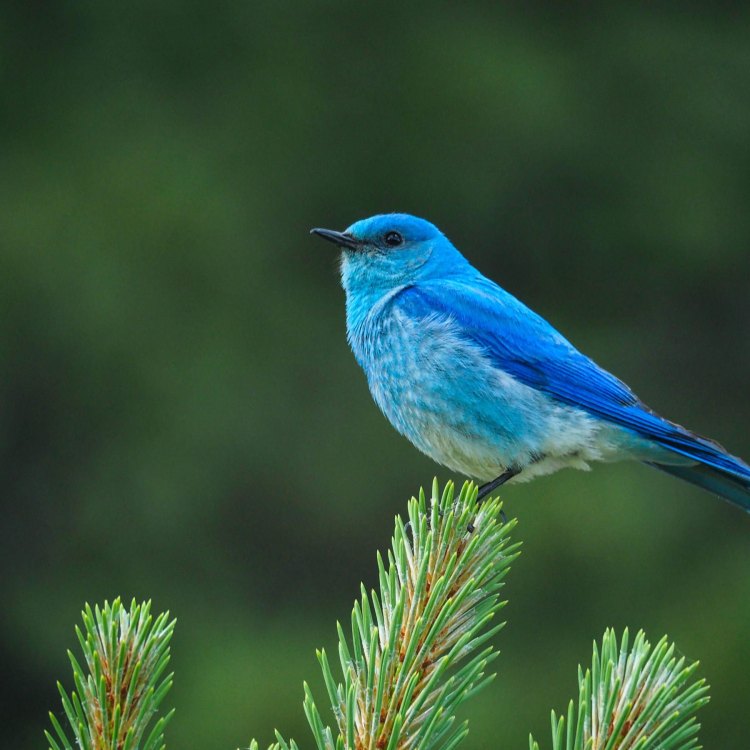
Sialia currucoides
The Beautiful Mountain Bluebird: A Symbol of Grace and Resilience
The mountains hold a certain mystique, with their towering peaks and rugged landscapes. Amidst this majestic beauty, there is a creature that captures the hearts and minds of many with its vibrant blue color and melodious call – the Mountain Bluebird. This medium-sized bird may seem unassuming at first, but it holds within it a wealth of unique features and behaviors that make it a true gem of the wild.Size and Lifespan
One of the first things that strikes you about the Mountain Bluebird is its size PeaceOfAnimals.Com. It falls into the category of medium-sized birds, with an average length of 6-7 inches and a wingspan of 12-15 inches. This makes it slightly larger than a typical sparrow but smaller than a robin.
In terms of lifespan, Mountain Bluebirds live for an average of 5-6 years in the wild. However, some individuals have been recorded to live up to 10 years. Their relatively short lifespan can be attributed to various factors such as predation, disease, and harsh environmental conditions.
Reproduction and Reproductive Behavior
Like most birds, Mountain Bluebirds have sexual reproduction, meaning they require fertilization from a mate to produce offspring. They are monogamous, meaning they typically mate with one partner for the duration of their breeding season, which typically spans from April to June.
During courtship, the male will perform an elaborate mating display to attract a female. This display includes flying back and forth while flashing its bright blue wings, as well as vocalizations such as its musical warbling song Modern Game Chicken. Once a pair has formed, they will work together to build their nest and raise their young.
Sound and Call
If you are lucky enough to hear the Mountain Bluebird's song, you are in for a treat. Their musical warbling song is described as a series of short, sweet notes that are both melodic and soothing to the ear. In addition to their song, they also have a soft, high-pitched call, which they use to communicate with others in their social group.
Migration Pattern
Mountain Bluebirds are migratory birds, meaning they travel long distances in search of suitable breeding and wintering grounds. They breed in the western United States and Canada and migrate south to various parts of the US and Mexico for the winter. Their migration patterns can cover thousands of miles and involve crossing mountain ranges and bodies of water.
Social Groups and Behavior
While Mountain Bluebirds are active and agile birds, they are mostly solitary creatures. They are usually seen singly or in pairs, but during the breeding season, they may form small family groups. These groups consist of the breeding pair and their young offspring.
In terms of behavior, Mountain Bluebirds are known to be territorial. They will defend their chosen breeding and nesting areas from other bluebirds, but they will also exhibit cooperative behavior by helping to feed and protect other members of their social group.
Threats and Conservation Status
As with many other bird species, Mountain Bluebirds face various threats in the wild. Their bright blue coloration makes them easy targets for birds of prey, such as hawks and falcons. They are also susceptible to predation by larger mammals, such as snakes and raccoons. Loss of habitat due to human activities, such as urbanization and agriculture, also poses a significant threat to their survival. Additionally, climate change can affect their breeding and wintering grounds, leading to population declines.
Despite these threats, the Mountain Bluebird's conservation status is currently listed as Least Concern. This means that while they may face some challenges, their overall population is not in immediate danger. However, continuous monitoring and conservation efforts are necessary to ensure their survival.
Impact on the Ecosystem
As with any other species in the ecosystem, Mountain Bluebirds play a vital role in maintaining balance and harmony within their environment. They are important pollinators of fruits and can also play a role in the dispersal of seeds from plants. Their actions help to maintain the health and diversity of the plant life, which in turn, affects other animals and organisms in the ecosystem.
Human Use and Interaction
The Mountain Bluebird is a popular bird for birdwatching and ecotourism. Its striking color and melodious song make it a sought-after sighting for bird enthusiasts. Ecotourism, which involves responsible travel to natural areas, is also a significant source of income for many communities, providing economic incentive for the conservation of these birds and their habitats.
Distinctive Features
The most notable and distinguishing feature of the Mountain Bluebird is its bright blue coloration. It is a stark contrast to its white underparts, making it a beautiful sight against the backdrop of a blue sky or a green landscape. Its slender body allows it to maneuver easily through the air, making it a graceful and agile bird.
Interesting Facts and Predators
Male Mountain Bluebirds are not just beautiful but also quite thoughtful and caring. During the breeding season, they will often bring food to the female while she is busy building the nest and laying eggs. This behavior is believed to strengthen their bond and help ensure the success of their offspring.
In addition to birds of prey, Mountain Bluebirds also face threats from other predators such as snakes, raccoons, and even larger birds like crows and jays. It is essential for them to remain vigilant and have well-developed escape strategies to evade these predators.
In conclusion, the Mountain Bluebird is a fascinating and beautiful creature that calls the mountains home. From their size and lifespan to their reproductive behavior and social groups, they hold within them unique features and behaviors that make them a remarkable species. As we continue to appreciate and admire these birds, it is important to also recognize the threats they face and work towards their conservation, ensuring their place in the wild for generations to come.
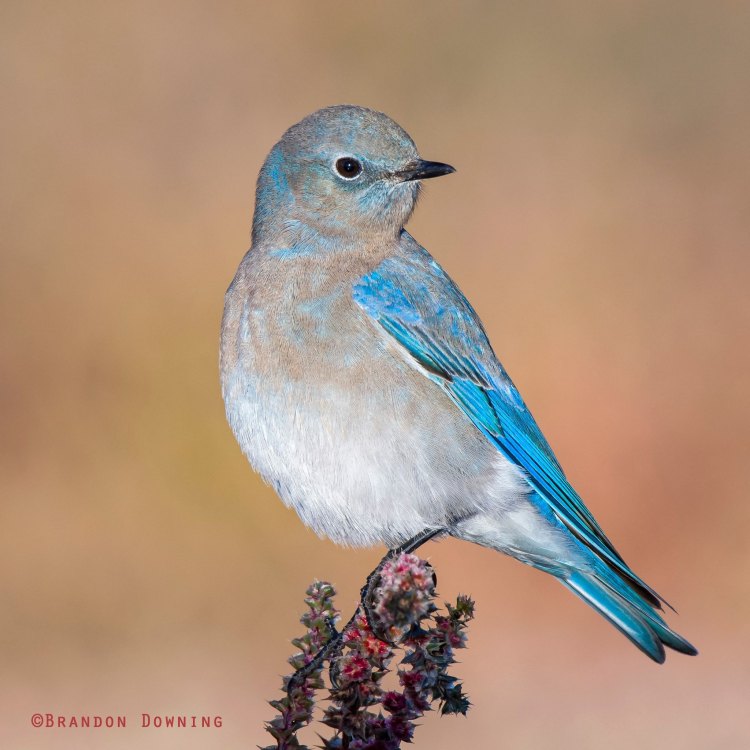
Mountain Bluebird: A Symbol of Beauty and Resilience
Disclaimer: The content provided is for informational purposes only. We cannot guarantee the accuracy of the information on this page 100%. All information provided here may change without prior notice.




